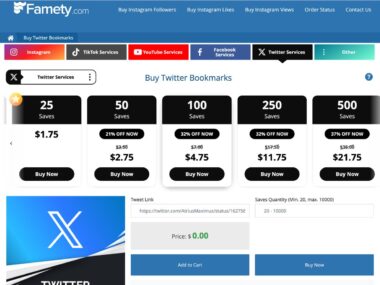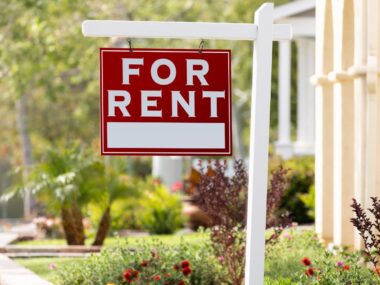In the complex world of homeowner’s association (HOA) management, financial health is the lifeblood that keeps the community strong. A robust reserve fund is not only a line item on a budget; it is the financial backbone of the association, ensuring hefty repairs such as a new roof, resurfacing a pool or replacement of pavement don’t turn into a financial catastrophe for the homeowners. For too long many HOAs have let these critical funds languish in high-cost (low interest) checking or savings accounts, essentially shedding a purchasing power each year on inflation. Fortunately, a powerful, often overlooked part of modern HOA finance is emerging as the best practice for today’s HOA management: the high yield savings account for HOA: Here’s how you can transform your association’s reserve and operating funds into a high-yield savings account, improve your financial standing dramatically, provide increased need security, and introduce a new standard of efficiency that complies with fiduciary duty.
Understanding the Critical Role of HOA Reserves
Before we go any further we need to understand what the problem is. HOA reserve funds are not used for small emergencies like maintenance or repairs. They are carefully calculated, long term funds meant to cover the expected and inevitable deterioration of the components of common property. These components may include: siding or aluminum shingle; elevators; clubhouse facilities or parking facilities; etc. Usually the professional reserve study does this (as they usually consult experts in the field) and does a useful life analysis and costs to each component, and then puts the dues into the reserve fund to be certain it is available when that money is needed. If there are not enough reserves the association has three choices: the alternative could be to ask for a special assessment which can be very expensive for homeowners; delay necessary maintenance work, and then wait until it builds up over time and costs more to fix; or borrow to pay the loan back and pay interest. None of those are exactly what I want to happen. So, the first priority of any baselane should be, first and foremost, collecting sufficient reserves, but conserving and growing them.
The Pitfall of Traditional Banking for HOAs
Since the inception of HOA’s, their funds have traditionally been held in accounts provided by local banks or credit unions. While convenient, these accounts are regularly subject to dismal annual percentage yields (APYs), often as low as 0. 01% to 0. 05%. In an environment in which inflation can average 2% to 3% per year, the money held in these accounts is being taken directly out of reach. That $100, 000 held in your reserve fund today will buy less when that $100, 000 roof is going to be replaced in 5 years. This seemingly silent erosion of capital is the direct threat to the financial security of the community and diminishes the careful planning undertaken in the reserve study.
What exactly is a High-Yield Savings Account (HYSA) and Why Does Your HOA Need One?
A high yield savings account is basically a savings account. It has the same interest as a regular savings account, only at a much higher interest rate. The average website bank that offers these accounts will have higher overhead costs than a brick and mortar bank, and therefore can pass those savings on to customers in the form of better interest rates. While rates change with the market, HYSA’s are very common to find that the APY is 10 to 20% higher than the nationwide average for Savings accounts. Since you are talking about an HOA, the benefits are much higher. By simply moving some of the reserves (and some operating cash) to a high yield savings account, the association is generating valuable, risk-free income. The interest earned would be a counterbalance to inflation, help build up the reserves faster without raising dues, and provide another level of protection in case that an unexpected cost rise occurs. It’s easy to set up, it’s more effective than any other idea and it’s a win-win proposition for every homeowner.
Addressing the Need for Security and Fiduciary Duty
There’s an even more common concern of the board members over online banking. It’s a legitimate question, and yes the answer is pretty reassuring. Good financial institutions offering HYSAs are FDIC-insured, just like your home bank. The Federal Deposit Insurance Corporation (FDIC) covers deposits to as much as $250, 000 per depositor per insured bank for each account ownership category. There may be ways to minimize that security for larger HOA funds if you work with the appropriate banks that offer programs to spread funds across multiple partner banks to ensure the total balance is FDIC-insured. The last thing is to consider going into a HYSA as a speculative investment. It’s a sensible cash management strategy. To say the board members walked away with a couple of hundred dollars in the bank with a negligible return is a crime against board members.
A Modern Financial Platform Built for HOAs
While many online banks currently offer HYSAs, there’s a new wave of financial technology being invented to handle the specific needs of property management companies and HOAs. Companies like Baselane are offering cutting edge banking platforms specifically designed for rental property owners and, increasingly, community associations. A platform like doesn’t just have a high-yield savings account, they integrate it into a full suite of financial tools.
For an HOA, that means having the operating account and reserve account linked, and being able to automatically move excess operating cash into the high-yield reserve account. That makes the whole process much simpler. It makes it much easier to maximize returns. The integration high yield savings account for HOA: automation provided by a specialized platform will make the HOA’s financial management so much more profitable, it’s also streamlined and transparent. Implementing the Switch.
Conclusion
In a world tumultuous with global uncertainties and cost increases, the board of an HOA is more critical than ever to be financially savvy. The dreaded risk of leaving important reserves in low interest accounts is costly and ineffective. Move those funds into a FDIC-insured, high yield savings account that is accessible to all homeowners, is a simple, effective, and responsible action that fundamentally improves the base of the community’s finances. It serves as an important fiduciary obligation to the residents of the community. It provides a strong cushion against inflation, increases safety net income that the board and homeowners enjoy at no cost to all homeowners. By using today’s financial technology including HYSAs and integrated platforms such as Baselane, HOA boards can take an action not only to manage for today, but to plan and
Prepare for the future to be prosperous and secure.











